After Maryland's community college enrollment grows, state funding shrinks. Find out why.
One Maryland community college president told Legislative leaders last week that recent proposed funding cuts “felt like a sucker punch.” The governor, whose administration put forth the reductions, used a milder term to describe the situation of returning funding to prior year levels: rebasing.
“How do we think about rebasing of a budget?” Gov. Wes Moore, a Democrat with a background in finance, asked rhetorically in response to a question about cuts during a press conference on Jan. 17.
At the preliminary budget press conference, Moore did not specifically cite community colleges as an item where the state funding returned to pre-pandemic levels, but the executive director of the Maryland Association of Community Colleges told members of the House Ways and Means Committee’s Education and Economic Development Subcommittee that’s what’s going on.
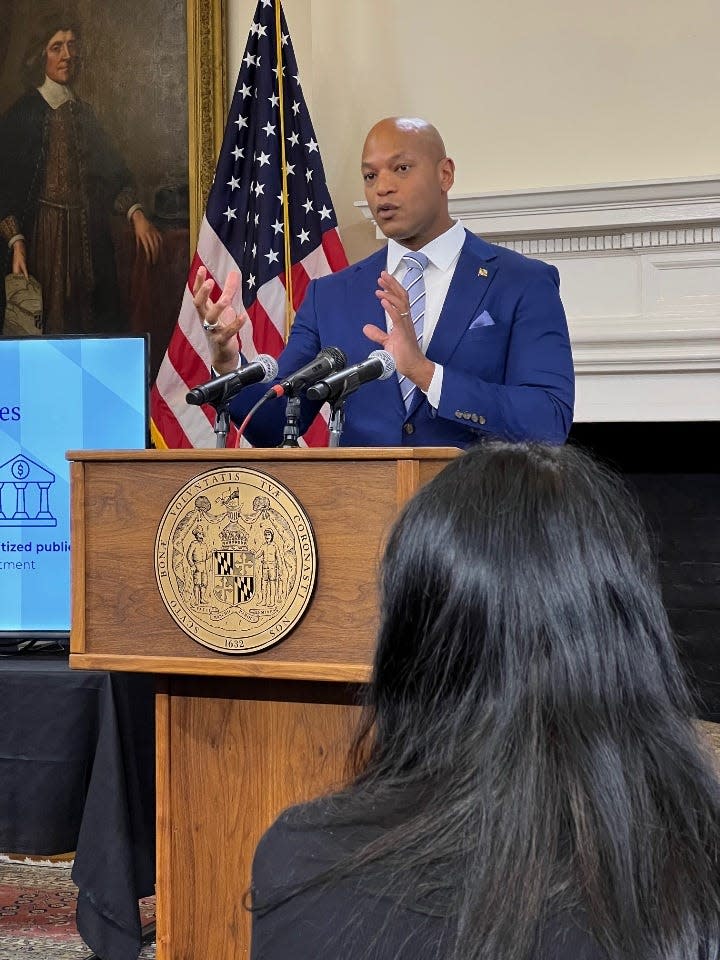
“Rebasing, in this instance, is another word for creating inequity in how the state funds higher education,” said Brad Phillips, who leads the organization representing 16 community colleges, during remarks to the subcommittee during a Feb. 1 hearing.
In fall 2023, Maryland community college enrollment increased for the first time in more than a decade, rebounding above 100,000 students statewide for the first time since 2020. A few months after the enrollment increase, this year, legislation requested by the administration proposed reducing funding in what would be the first cut to community college funding in at least five years, if passed.
More: Moore's Maryland budget boosts child care, education, without raising taxes. What to know.
Hagerstown Community College president asks for full funding
The bill, the Budget Reconciliation and Financing Act of 2024, also known as the BRFA (phonetically, Bur-fa), proposes reducing funding for community colleges from near $400 million in fiscal year 2025 to $374.9 million, a cut of $22.6 million. It also changes the formula for community college funding in the state going forward.
And while the state’s leaders wrestle with balancing the budget in Annapolis, Hagerstown Community College President Jim Klauber put the issue of community college funding before the state Senate president last month not in terms of millions of dollars, but as a matter of cents.
“All we ask for is 29 cents on the dollar of whatever you give to the University System of Maryland,” Klauber told Senate President Bill Ferguson during a meeting with a Washington County group at the State House on Jan. 23. “Give them whatever you want, just give us 29 cents on the dollar.”
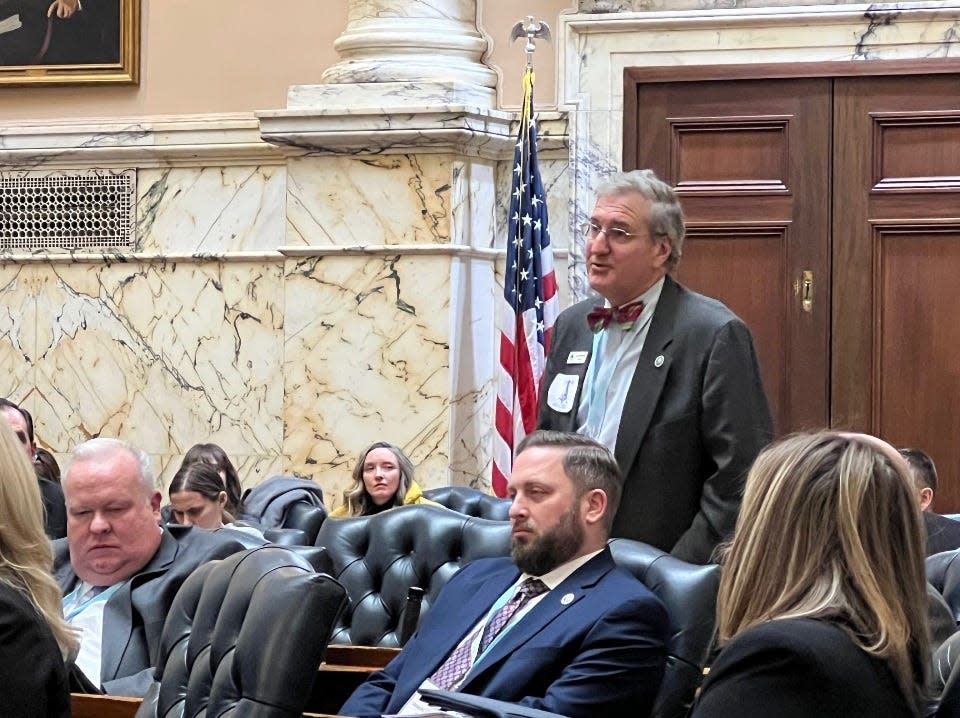
Klauber used his moment with the Senate president to “implore upon (him) the concept of restoring full Cade funding,” referencing the formula used to fund the state’s community colleges since the late 1990s when it was introduced by state Sen. John Cade, R-Anne Arundel.
More: Transportation top issue as Washington County comes to capital for 'Day in Annapolis'
Funding under the proposed legislation alters the formula for community colleges to 26.5% of the funding given to the state’s four-year public institutions, a reduction of only 2.5 cents per dollar in Klauber’s terms, but with millions in state funds invested in higher education annually, those pennies add up.
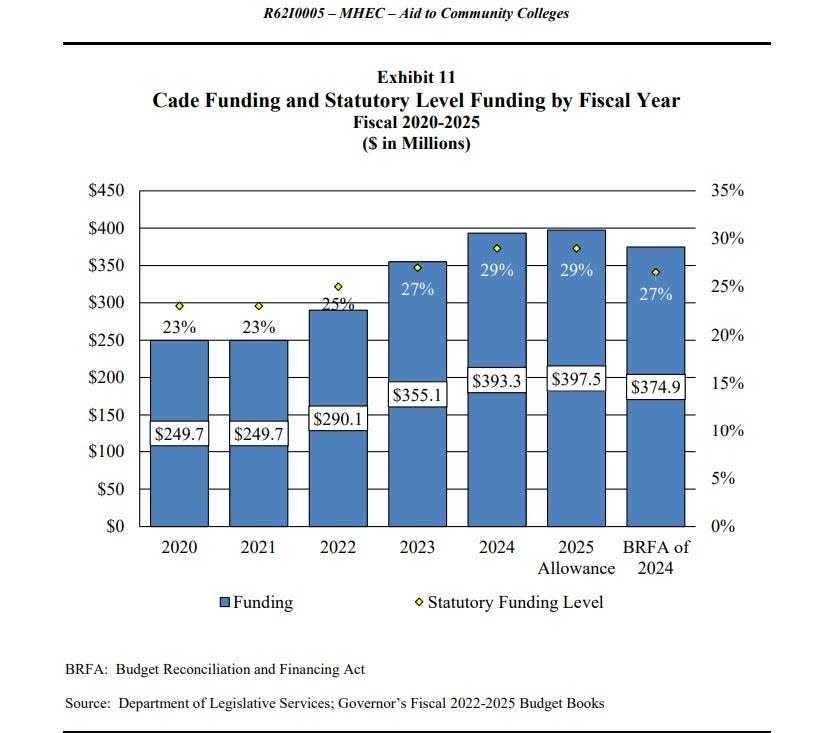
Phillips called the change the “second-largest reduction in the history of the formula” in his remarks before the Education and Economic Development Subcommittee. The formula’s history, dating back to fiscal year 2009, provided in the legislative text bears this out, while also showing that the formula has generally been below 25%, rising above that mark again in fiscal year 2021.
Carter Elliott IV, a spokesperson for Moore, noted the governor’s proposed funding of $375 million is $125 million more than the colleges received as recently as fiscal year 2020.
“The Moore-Miller administration worked with discipline to craft a budget that will not only help close structural gaps, but will drive economic growth and create long-term fiscal sustainability for Maryland,” said Elliott, in an email. He called the governor’s budget "a fiscally responsible plan that puts record investments in K-12 education."
Eastern Shore delegation members send letter of support
What’s being questioned by some in Annapolis is not the administration’s attempt to balance the budget, but whether the proposed reductions in community college funding are the way to do it.
“There is no other segment in higher education that does more to increase social and economic mobility for our students,” Phillips, the executive director of the state’s association of community colleges, told the House subcommittee last week as most of the leaders of Maryland’s community college sat behind him.
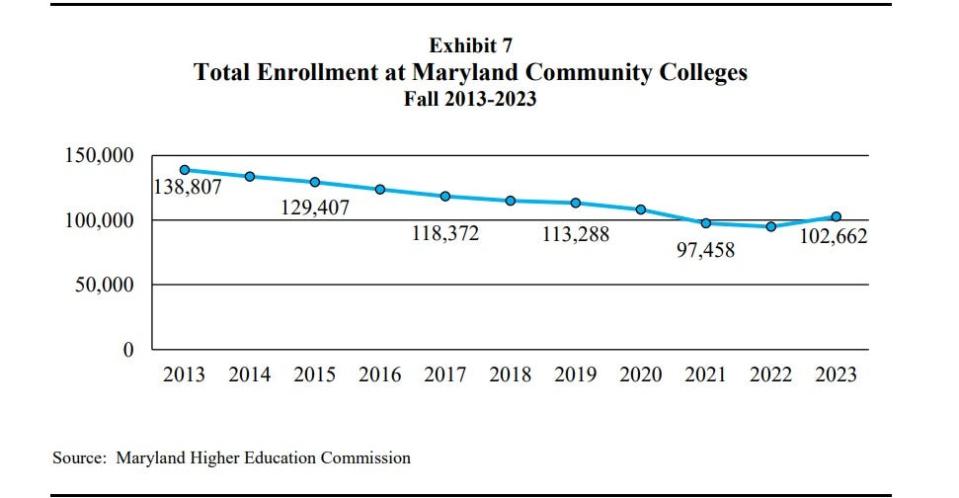
He made an economic argument to members of the Eastern Shore delegation to the General Assembly the week before.
“You have a 30,000 (job) vacancy rate in cyber jobs (in Maryland) that really need some type of credential,” said Phillips, during an Eastern Shore delegation meeting held by Zoom on Jan. 26. “So, without the funding to do some of this work, we can’t move forward very quickly or at all, and that’s just in one industry.”
The following week, members of the Eastern Shore delegation sent a letter to the administration’s budget secretary and to the governor calling for a “remedy” to the proposed cuts, calling permanently slashing funding “particularly untoward.”
More: Citizen legislator: Business owner Del. Adams leads Eastern Shore delegation's efforts
The National Cyber Director visits a Maryland community college
Just weeks earlier, the country’s National Cyber Director noted a similar number of cyber job openings in the state on the campus of the Community College of Baltimore County, led by President Sandra Kurtinitis, the one wo told lawmakers in Annapolis the cuts were a “sucker punch.”
Del. Jeff Ghrist, an Eastern Shore Republican on the education subcommittee on appropriations, said the five county school systems on the mid-Shore are modeling a program at Chesapeake College after a regional tech school in Western Maryland’s Washington County.
“We’re expecting them to do over the next several years to go above and beyond what they’ve ever done in the past,” said Ghrist, of community colleges during the Feb. 1 hearing. He, along with the chair of the Eastern Shore delegation, Del. Chris Adams, R-Caroline/Dorchester/Talbot/ Wicomico, were the two signatories on the delegation’s letter dated that same day and sent by email.
Moore touts housing package: Maryland Gov. Moore touts housing package as economic boost as it nears introduction
Wor-Wic College is helping meet cyber demand with programs
The community college in Adams’ hometown of Salisbury, Wor-Wic Community College, has been one of the institutions developing new programs that can help meet the cyber demand.
“Wor-Wic offers five different associate degree programs in computer studies – some, but not all, are transfer programs, designed for students who want to go on to a four-year institution to complete a bachelor’s degree (our cybersecurity concentration is a transfer program),” said Gwenn Garland, the college’s communications coordinator, in an email.
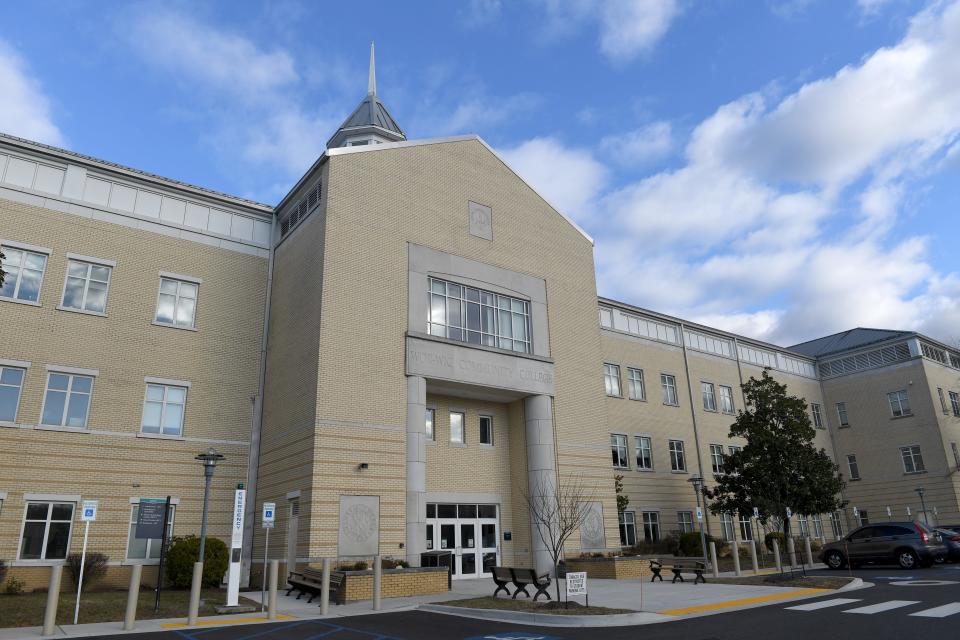
She said 117 students have chosen cybersecurity as their concentration so far since the college started offering it in the fall of 2020.
On the state’s other side, Rick Weldon, president and CEO of the Frederick County Chamber of Commerce, called the role of the community college in economic development “essential.”
“It may not be the primary pipeline for tech sector employees, but it’s certainly one of the feeders,” said Weldon, a former delegate representing Frederick and Washington counties, in a Feb. 6 phone interview.
Bill introduced to protect judges: After attack on Maryland judge, bill brought to protect judiciary members, their families
Attendees of two-year colleges among Maryland's leaders
Del. Stephanie Smith, D-Baltimore City, the chair of the education and economic development subcommittee, pushed back on the proposed community college cuts during the Feb. 1 hearing.
“If we’re going to leverage various tech hub identifications and other economic development visions for our state to have ‘Maryland’s decade,’ ” said Smith, referencing one of Moore’s signature phases and a federal “Tech Hub” designation for the Baltimore-area obtained last year, “there’s no way we’re going to have Maryland’s decade with our higher education community less potent and less resourced.”
During the hearing, Smith told the community college leaders that she spent time at a community college in Virginia before graduating from Hampton University. The delegate representing Baltimore is not the only one in Annapolis with that background either.
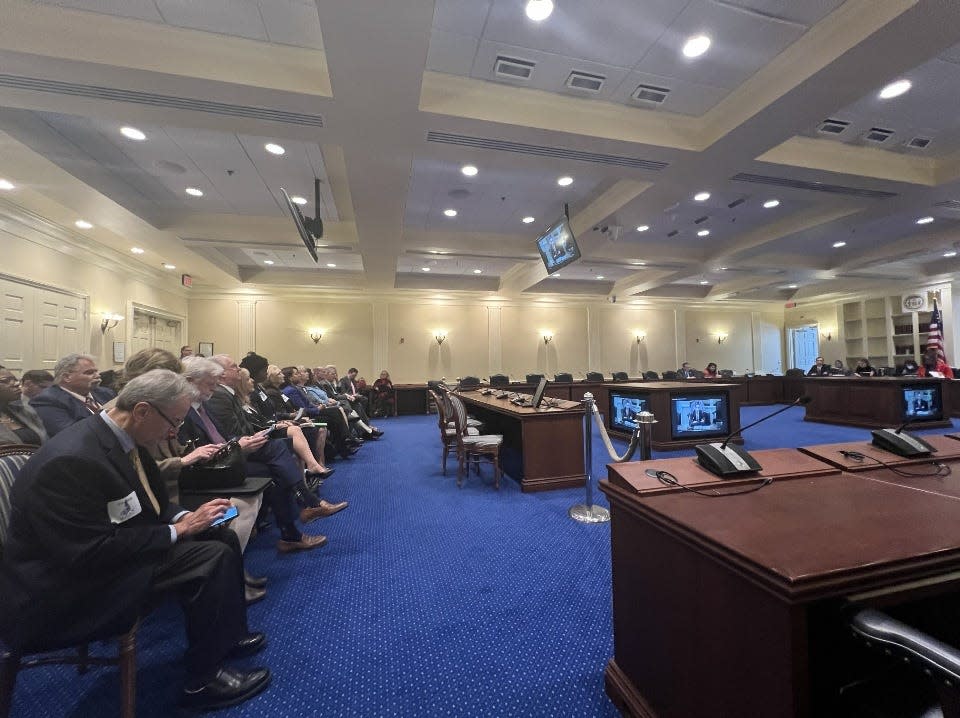
The state’s governor, Moore, who like Smith went on to obtain another degree, received his initial degree from a two-year college in Pennsylvania. The issue of community college funding may be decided in the days and weeks ahead.
The budget bill for both chambers, the House of Delegates and the Senate, is scheduled to be passed by April 1, one week before the General Assembly is set to adjourn.
Dwight A. Weingarten is an investigative reporter, covering the Maryland State House and state issues. He can be reached at dweingarten@gannett.com or on Twitter at @DwightWeingart2.
This article originally appeared on Salisbury Daily Times: Maryland's community college funds cut under proposal. What to know.

